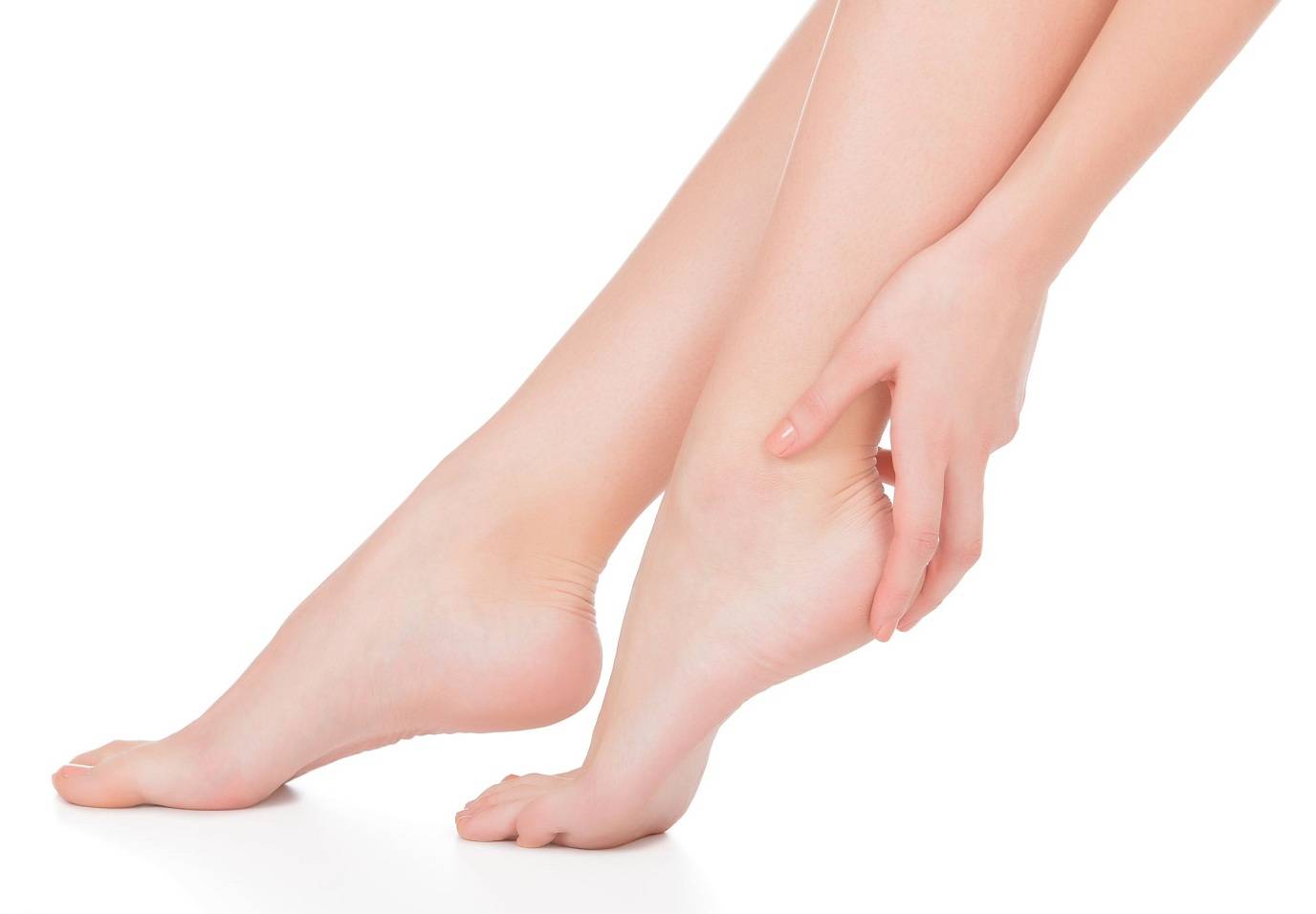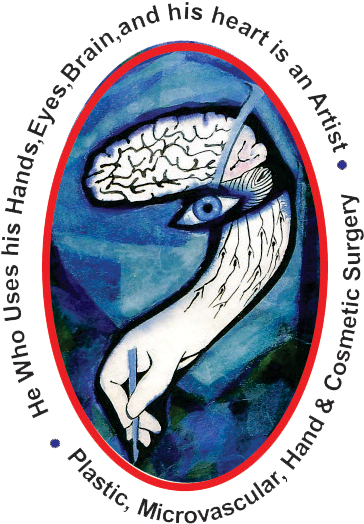Diabetic Foot Care
If you have diabetes, having too much glucose (aka sugar) in your blood for a long time can cause some serious complications, including foot problems.

Tips for Diabetic Foot Care
Proper foot care can prevent these common foot problems or treat them before they cause serious complications. Here are some tips for good foot care:
• Take care of yourself and your diabetes. Follow your doctor’s advice regarding nutrition, exercise, and medication. Keep your blood sugar level within the range recommended by your doctor.
• Wash your feet in warm water every day, using a mild soap. Test the temperature of the water with your elbow because nerve damage can affect sensation in your hands, too. Do not soak your feet. Dry your feet well, especially between your toes.
• Check your feet every day for sores, blisters, redness, calluses, or any other problems. If you have poor blood flow, it is especially important to check your feet daily.
• If the skin on your feet is dry, keep it moist by applying lotion after you wash and dry your feet. Do not put lotion between your toes. Your doctor can tell you which type of lotion is best.
• Gently smooth corns and calluses with an emery board or pumice stone. Do this after your bath or shower, when your skin is soft. Move the emery board in only one direction.
• Check your toenails once a week. Trim your toenails with a nail clipper straight across. Do not round off the corners of toenails or cut down on the sides of the nails. After clipping, smooth the toenails with a nail file.
• Always wear closed-toed shoes or slippers. Do not wear sandals and do not walk barefoot, even around the house. Always wear socks or stockings. Wear socks or stockings that fit your feet well and have soft elastic.
• Wear shoes that fit well. Buy shoes made of canvas or leather and break them in slowly. Extra wide shoes are also available in specialty stores that will allow for more room for the foot if you have a foot deformity.
• Always check the inside of shoes to make sure that no objects are left inside.
• Protect your feet from heat and cold. Wear shoes at the beach or on hot pavement. Wear socks at night if your feet get cold.
• Keep the blood flowing to your feet. Put your feet up when sitting, wiggle your toes and move your ankles several times a day, and don’t cross your legs for long periods.
• If you smoke, stop. Smoking can make problems with blood flow worse.
• If you have a foot problem that gets worse or won’t heal, contact your doctor.
• Make sure your diabetes doctor checks your feet during each checkup. Get a thorough foot exam once a year.
• See your podiatrist (a foot doctor) every 2 to 3 months for checkups, even if you don’t have any foot problems.
Signs of Diabetic Foot Problems
If you have diabetes, contact your doctor if you have any of these problems:
- Changes in skin color
- Changes in skin temperature
- Swelling in the foot or ankle
- Pain in the legs
- Open sores on the feet that are slow to heal or are draining
- Ingrown toenails or toenails infected with fungus
- Corns or calluses
- Dry cracks in the skin, especially around the heel
- Foot odor that is unusual or won’t go away
Complications of Diabetic Foot Problems
Skin and bone infections. A small cut or wound can lead to infections. Nerve and blood vessel damage, along immune system problems, make them more likely. Most infections happen in wounds previously treated with antibiotics. Infections can be treated with antibiotics. Severe cases may require treatment in a hospital.
Abscess. Sometimes infections eat into bones or tissue and create a pocket of pus called an abscess. The common treatment is to drain the abscess. It may require removal of some bone or tissue, but newer methods, like oxygen therapy, are less invasive.
Gangrene. Diabetes affects the blood vessels that supply your fingers and toes. When blood flow is cut off, tissue can die. Treatment is usually oxygen therapy or surgery to remove the affected area.
Deformities. Nerve damage can weaken the muscles in your feet and lead to problems like hammertoes, claw feet, prominent metatarsal heads (ends of the bones below your toes), and pes cavus, or a high arch that won’t flatten when you put weight on it.
Charcot foot. Diabetes can weaken the bones in your foot so much that they break. Nerve damage can lessen sensation and prevent you from realizing it. You keep walking on broken bones and your foot will change shape. It might look like your arch has collapsed into a rocker shape.
Amputation. Problems with blood flow and nerves make it more likely for people with diabetes to get a foot injury and not realize it until infection sets in. When an infection can’t be healed, creates an abscess, or if low blood flow leads to gangrene, amputation is often the best treatment.
Questions? We got Answers!
Diabetes can cause two problems that can affect your feet:
Diabetic neuropathy. Uncontrolled diabetes can damage your nerves. If you have damaged nerves in your legs and feet, you might not feel heat, cold, or pain there. This lack of feeling is called “sensory diabetic neuropathy.” If you do not feel a cut or sore on your foot because of neuropathy, the cut could get worse and become infected. The muscles of your foot may not work properly because nerves to the muscles are damaged. This could cause your foot to not align properly and create too much pressure on one part of your foot.
Peripheral vascular disease. Diabetes also affects the flow of blood. Without good blood flow, it takes longer for a sore or cut to heal. Poor blood flow in the arms and legs is called “peripheral vascular disease.” If you have an infection that will not heal because of poor blood flow, you are at risk for developing ulcers or gangrene (the death of tissue due to a lack of blood).
Anyone can get the foot problems listed below. For people with diabetes, however, these common foot problems can lead to infection and serious complications, such as amputation.
Athlete’s foot. Athlete’s foot is a fungus that causes itching, redness, and cracking. Germs can enter through the cracks in your skin and cause an infection. Medicines that kill the fungus can treat athlete’s foot. These medicines come in pills or creams.
Fungal infection of nails. Nails that are infected with a fungus may become discolored (yellowish-brown or opaque), thick, and brittle and may separate from the rest of your nail. In some cases, your nail may crumble. The dark, moist, and warm environment of shoes can help a fungus grow. An injury to your nail can also lead to a fungal infection. Fungal nail infections are hard to treat. Medications applied to the nail are available, but they only help a small number of fungal nail problems. You may need prescription medicine that you take by mouth. Your doctor might also remove the damaged nail.
Calluses. A callus is a buildup of hard skin, usually on the underside of the foot. Calluses are caused by an uneven distribution of weight. Calluses also can be caused by poorly fitting shoes or by a skin problem. It’s normal to have some callus on your foot, so your doctor will decide if your callus is causing problems. If you have a callus, take care of it properly. After your bath or shower, use a pumice stone to gently remove the built-up tissue. Use cushioned pads and insoles in your shoes. Medications can soften calluses. DO NOT try to cut the callus or remove it with a sharp object.
Corns. A corn is a buildup of hard skin near a bony area of a toe or between toes. Corns may happen because of pressure from shoes that rub against your toes or cause friction between your toes. Be sure to take care of them properly. After your bath or shower, use a pumice stone to gently remove the built-up tissue. Do not use over-the-counter remedies to dissolve corns. DO NOT try to cut the corn or remove it with a sharp object.
Blisters. Blisters can form when your shoes rub the same spot on your foot. Wearing shoes that do not fit properly or wearing shoes without socks can cause blisters, which can become infected. When treating blisters, it’s important not to “pop” them. The skin covering the blister helps protect it from infection. Use an antibacterial cream and clean, soft bandages to protect the skin and prevent infection.
Bunions. A bunion forms when your big toe bends toward your second toe. Often, the spot where your big toe joins your foot becomes red and callused. This area also may stick out and become hard. Bunions can form on one or both feet. They may run in the family, but most often they’re caused by wearing high-heeled shoes with narrow toes. These shoes put pressure on your big toe, pushing it toward your second toe. Felt or foam padding may help protect the bunion from irritation. Your doctor can also use a device to separate the big and second toes. If the bunion causes severe pain or deformity, you might need surgery to realign your toes.
Dry skin. Dry skin can crack, which can allow germs to enter. Use moisturizing soaps and lotions to keep your skin moist and soft. Ask your doctor which ones to use.
Diabetic ulcers. A foot ulcer is a break in the skin or a deep sore. They can become infected. Foot ulcers can happen from minor scrapes, cuts that heal slowly, or from the rubbing of shoes that do not fit well. It’s important to treat them as soon as you notice them. Ask your doctor for advice on how to best care for your ulcer. Up to 10% of people with diabetes will get foot ulcers.
Hammertoes. A hammertoe is a toe that is bent because of a weakened muscle. The weakened muscle makes the tendons in your toe shorter, causing your toe to curl under your foot. Hammertoes can run in families. They can also be caused by shoes that are too short. Hammertoes can cause problems with walking and can lead to blisters, calluses, and sores. Splints and corrective shoes can treat them. In severe cases, you may need surgery to straighten your toes.
Ingrown toenails. Ingrown toenails happen when the edges of the nail grow into your skin. They cause pressure and pain along the nail edges. The edge of the nail may cut into your skin, causing redness, swelling, pain, drainage, and infection. The most common cause of ingrown toenails is pressure from shoes. Other causes include improperly trimmed nails, crowding of the toes, and repeated trauma to the feet from activities such as running, walking, or doing aerobics. Keep your toenails properly trimmed to prevent ingrown toenails. If you have a persistent problem or if you have a nail infection, you may need a doctor’s care. Surgery to remove part of the toenail and growth plate can treat severe problems from ingrown toenails.
Plantar warts. Plantar warts look like calluses on the ball of the foot or on the heel. They may appear to have small pinholes or tiny black spots in the center. The warts are usually painful and may grow singly or in clusters. Plantar warts are caused by a virus that infects the outer layer of skin on the soles of the feet. If you are not sure if you have a plantar wart or a callus, let your doctor decide. They have several ways to remove them.

